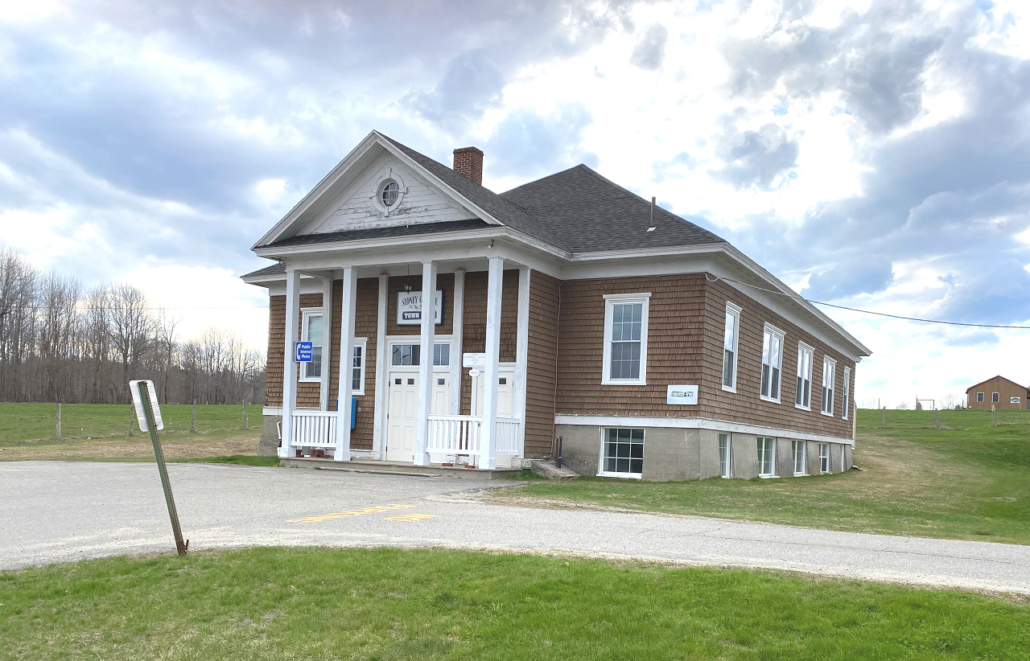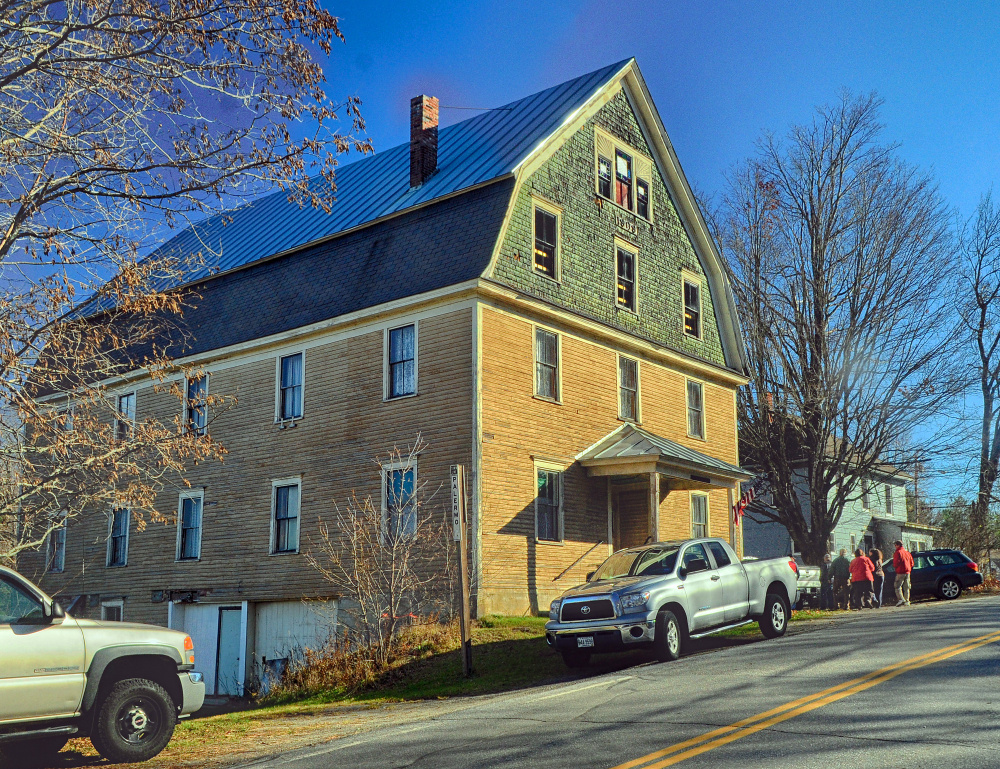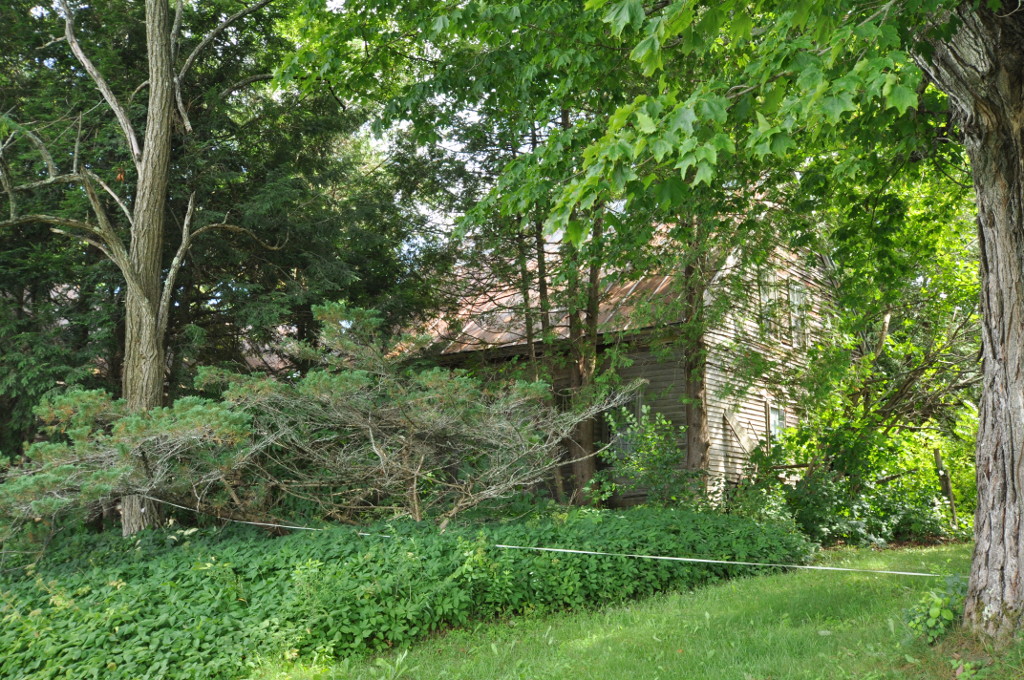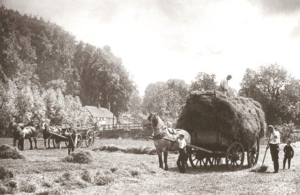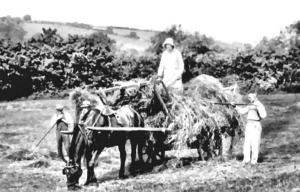Up and down the Kennebec Valley: Granges – Part 3
/0 Comments/in Local History, Maine History, Palermo, Sidney/by Mary Growby Mary Grow
Palermo & Sidney
Palermo had two Granges for which multiple records exist, and Milton Dowe found an earlier third one in his research for his 1954 History Town of Palermo.
Dowe gives one paragraph to “Recreation Grange” – the quotation marks are his, and he did not add a number – in North Palermo, organized in 1875 and therefore among Maine’s first Granges. Dowe wrote that Leander Bowler owned the building where the Grange met, and that, “This grange did not exist many years.”
This writer has searched unsuccessfully on line for another reference to Recreation Grange.
Branch Mills Grange #336 started Jan. 1, 1897, and is included in the China bicentennial history (among other sources), though it has been headquartered in the Palermo side of Branch Mills Village most of its life. Sheepscot Lake Grange #445 was organized in 1905, in East Palermo.
The China history says Branch Mills Grange started with 20 charter members. Virginia Dowe, in a 1948 summary history included in Milton Dowe’s 1997 reminiscence, Palermo, Maine Things That I Remember in 1996, said there were 29 and named them. John Henry Barton, of Windsor, started the organization, at what the China history called the Good Templars Hall and Dowe called the “old Academy Hall.”
(Milton Edwin Dowe [Feb. 19, 1912 – Aug. 7, 2001] and Virginia Wescott Dowe [March 12, 1916 – Nov. 20, 2012] married April 29, 1939. They ran the Real Maine Country Store at the intersection of Branch Mills and North Palermo roads from the mid-1940s until 1981 or 1982. Among their many roles in the town, Milton Dowe helped organize the volunteer fire department and was its chief for 18 years, and Virginia Dowe was Palermo Town Clerk for 47 years.)
Kingsbury’s history says the first Good Templars group organized in Branch Mills lasted from December 1865 to sometime in 1869. In April 1874 it was succeeded by Lodge #349, which was still active in 1892. The Good Templars owned the building that Barzillai (or Brazillai) Harrington built for an academy in the mid-1800s.
Early 20th century records included two references to J. H. Barton, resident of West Windsor: he was a Windsor selectman in 1902, and he commented on the condition of orchards in a 1903 State Pomological Society publication.
The China history says that during its first year, Branch Mills Grange gained only 17 members, so in 1898 they organized a contest (unspecified) that brought 90 more people to join them. The larger group began planning to buy or build a Grange Hall.
By 1900, the China history says, they owned a former shoe shop in Branch Mills, on the west (China) side of the Sheepscot River. They enlarged and remodeled the building and held a dedication on March 13, 1902. That year, state Grange records say, there were 108 members.
The Grange Hall burned in the June 26, 1908, fire that destroyed almost every building in the village. The China history describes what happened next, under the auspices of Eleon Shuman, at 18 “probably the youngest Grange Master in Maine,” and in 1975 a source of information for the history.
The Grangers sold their lot for $100, and for $300 bought a two-acre lot on the east (Palermo) side of the river from the Shuman family. They borrowed $4,000 and hired Fred Jordan as contractor.
Jordan in turn hired Shuman, who had been working as a painter for a man in China, and asked Shuman to do carpentry until it was time to paint. So Shuman “bought a saw and hammer and became a carpenter.”
Two jobs he remembered: nailing the rafters to the ridgepole, because “no one else wanted to climb that high”; and making the wooden figures 1909 and nailing them on the building’s face.
As in other towns, the Grange Hall served as a community center. For instance, Milton Dowe wrote in his 1954 history that when electricity reached Branch Mills in the summer of 1928, the lights were turned on on Aug. 8, and the Aug. 10 celebration was held in the Grange Hall.
The hall served as a meeting place for other town organizations. It hosted town meetings and other official public events. It was available for public entertainment, like dances, movies and plays; and for residents’ celebrations of weddings and the like.
Virginia Dowe wrote that during World War II Branch Mills Grange spent more than $500 helping and honoring soldiers. The Grange paid soldiers’ dues and sent Christmas gifts; and as veterans came home, Grange members gave each $25 and an honorary banquet.
In January 1947, Virginia Dowe continued, Grange members celebrated the organization’s 50th anniversary with “a tea, oyster stew supper and an old-fashioned dance,” with older members telling stories.
In the 1940s, she wrote, weekly dances in the winter provided funds for a furnace, installed in 1948.
Also in 1948, Milton Dowe wrote, Branch Mills Juvenile Grange #162 was established.
Grange-sponsored dances, “dramas” and other events benefited the volunteer fire department; Grangers donated $50 and let firefighters use the Grange Hall basement as a firehouse. The Grange Hall’s west wall was on the China-Palermo line and the basement door was on the west, so the fire trucks crossed into China as they left the building.
In 1949, Virginia Dowe wrote, Branch Mills Grange had 131 members and “a substantial fund in the treasury.” In 1975, according to the China history, the firefighters still occupied the basement and the Palermo town office was on the ground floor, leaving the second-floor meeting room for town meetings and Grange and other events.
Since 1975, a new town office and a new fire station have been built on North Palermo Road.
Branch Mills Grange was active in 2015 and is still listed as active by the Maine State Grange. The person listed on the state Grange website for information did not return a telephone call.
Sheepscot Lake Grange #445, in East Palermo, was organized Oct. 10, 1905, according to Milton Dowe’s history. Dowe wrote that its initial meetings were in the East Palermo schoolhouse, built by Paul Ames (who was related to novelist Ben Ames Williams).
Later, meetings moved to the second floor of Carroll Turner’s store. In 1907, Grange members bought a piece of land; in July 1907 the Grange was incorporated; and in the fall of 1908, members built a stable for their horses, presumably on the land they owned.
In 1907, Violet Lenfest reported to the state Department of Agriculture on behalf of Sheepscot Lake Grange. It was a bad year for insect pests. There were only a few “red-humped and yellow-necked apple worms,” fall webworms and grasshoppers; but cutworms, tent caterpillars, potato beetles, rose chafer beetles, “codling moths, cabbage worms, currant worms, railroad worms, horn flies and mosquitoes” were numerous.
Construction of the Sheepscot Lake Grange Hall started in the spring of 1910, and the building was finished in October. The first Sheepscot Lake Grange fair was held in the hall in September 1913; the fairs were still annual events when Dowe wrote in 1954.
Sheepscot Lake Juvenile Grange #106 “was chartered Feb. 15, 1941,” Dowe wrote.
In 1982, Sheepscot Lake Grange honored Walter Banton (Feb. 4, 1918 – Sept. 19, 2007), a World War II veteran active in town affairs, with its outstanding citizen award.
On the west side of the Kennebec, Sidney Grange #194 was organized Nov. 24, 1875, with 25 charter members. One of the members’ first actions, Alice Hammond wrote in her Sidney history, was to borrow $200 “to buy groceries to be sold to members at cost.” In 1876, they got a license to sell tobacco.
In 1885 Sidney Grange members started the Sidney Agricultural Fair, and from 1887 they invited non-members to bring entries. The fair was held annually at the town house on Middle Road. Kingsbury wrote that the Fair’s best displays were fruit and working cattle: “seventy-five yoke of the latter, driven in one continuous line, were shown one year.”
Brothers George and Frank Bowman had the largest tree nursery in Kennebec County, Kingsbury wrote. George Bowman was president of the Fair from 1887 until at least 1892 and was one of the early Grange Masters.
Hammond wrote that Grange members held their early meetings on the second floor of a store building on River Road. When they started considering building or buying a permanent home, enough Middle Road farmers were members that the group asked to share the town house for a year.
As the arrangement continued, the Grangers added a second story to the town house. The town office, a kitchen and a meeting room/dining room were on the first floor; the Grange used the upper floor for meetings and social events.
An old photo in Hammond’s history shows the front of the “town and grange hall,” an unadorned wooden rectangle with a generous front entrance and a ground-floor window on at least one side of the entrance (the photo is unclear). There are three windows on the second floor and two more above them under the sloping roof.
When Kingsbury’s history was published in 1892, Sidney Grange had 160 members and owned a “capacious hall.” In 1894, Grangers reached agreement with the congregation of the neighboring Universalist Church to build a horse shed on the church’s land, to be owned by the church and used by both groups.
State Grange records show 310 members in 1902 and 282 in 1906. The state records include a report from the Grange’s Deputy of West Kennebec County on his Oct. 30, 1902, inspection of Sidney Grange. He recorded 307 members with more applications coming in while he was there.
He commented: “Books well kept and dues well paid up. Young Master well qualified for his work.
Hammond wrote that Grange meetings were held every Thursday evening until 1946, when they decreased to two Thursdays a month.
The Grange was a source of information for farmers and a community center for everyone, Hammond wrote. Grange gatherings often featured meals; she wrote of “bills for eight gallons of oysters for a stew” and coffee brewed in a “copper wash boiler with a spigot soldered near the bottom.”
On May 6, 1937, after a Grange meeting, the building caught fire. Because of fog, the fire wasn’t spotted promptly; and the Oakland fire truck got stuck in Middle Road mud. The hall, the horse shed and the church all burned; firefighters were able to pour enough water on the safe to keep town records from being destroyed.
Voters at a special town meeting agreed to rebuild their town hall at about the same place and again with the Grangers, Hammond said. Waterville Savings Bank donated land southwest of the former building site; town and Grange committees worked together to assemble a building crew; and money was accumulated from insurance and multiple other sources to provide the $9,533.15 needed “without an appropriation from the town.”
Hammond wrote that Grange members and town voters approved in 1937 and 1938 an agreement for the “use, care and renting” of the building that was still in effect when her history was published in 1992. By then, Sidney Grange had fewer than 50 members.
The 2003 town comprehensive plan says Sidney owned its separate town office building and had a half interest in the Grange Hall, splitting expenses with the Grange.
Currently the Grange Hall and the single-story town office building just north of it share a lot at 2986 Middle Road. The Grange Hall is a wood-shingled building atop a basement that rises above ground level. Across the center of the front, tall pillars support a pediment the height of the peaked roof, with a single window on each side on the basement and upper levels.
The Sidney Historical Society headquarters are in the basement. When this writer visited the hall recently, a sign on Middle Road advertised Young Americans Dance Center. A lady arriving with several young (elementary-school age) Americans said she believed dance classes were offered several days a week. YADC websites say the organization is based at Waterville’s Alfond Youth Center with a “secondary campus” in Sidney.
Main sources
Dowe, Milton E., History Town of Palermo Incorporated 1884 (1954).
Dowe, Milton E., Palermo, Maine Things That I Remember in 1996 (1997).
Grow, Mary M., China Maine Bicentennial History including 1984 revisions (1984).
Hammond, Alice, History of Sidney Maine 1792-1992 (1992).
Kingsbury, Henry D., ed., Illustrated History of Kennebec County Maine 1625-1892 (1892).
Websites, miscellaneous.
Last chance to order Vidalia onions!
/0 Comments/in Community, Palermo/by Website Editor
By ryan griffis – originally posted to Flickr as Vidalia Onions, CC BY-SA 2.0, Link
The April 25 deadline is approaching quickly to order and send your check in for Vidalia onions. These big beauties will arrive at the Palermo Community Center, on Turner Ridge Road, right around Mothers Day. There isn’t a firm shipping date yet because the onions are still soaking up sunshine and rain down in Georgia, and the farmers have not yet determined the precise day to pick them. You will get the news as soon as we do!
To order, either email pwhitehawk@fairpoint.net or call Connie at 993-2294. Please make your check out to “LCF ” and send it to Living Communities Foundation, P.O. Box 151, Palermo, ME 04354. Each box costs $27.00 for 25 pounds. Shipping costs have gone up, so this is the last year that we can offer these gourmet onions at this price.
Proceeds from this sale benefit the Palermo Community Center, which hosts the Palermo Food Pantry and sponsors the Great ThunderChicken Drum. Your support of these programs and more is highly appreciated. We are doing all we can to make the Community Center and Community Garden a place for everybody to learn and enjoy.
Vidalia onions returning as Palermo community center fundraiser
/0 Comments/in Community, Events, Palermo/by Website Editor
by ryan griffis – originally posted to Flickr as Vidalia Onions, CC BY-SA 2.0, Link
Covid may have cancelled last year’s fundraiser, but the Palermo Community Center is back in action, selling 25-pound boxes of fresh, sweet Vidalia onions from Georgia. They are still ripening, but are expected to arrive in Maine the week of May 10. The boxes cost $27 each, even though shipping costs have gone up, so this is the last time they will be offered at this price.
To order, please call Connie at 993-2294 or email pwhitehawk@fairpoint.net. Please be sure to leave your contact phone number, so you may be contacted for confirmation or a call when the onions are unloaded at the Palermo Community Center. Payment is needed at the time of the order, so please make the check out to “LCF” and address your envelope to: Living Communities Foundation, P.O. Box 151, Palermo, ME 04354. Orders and payment must be received by April 25.
Proceeds from the sale pay ongoing utilities and maintenance costs for the Community Center, which also hosts the Palermo Food Pantry. Your support is truly appreciated.
Palermo student earns climate scholarship
/0 Comments/in Community, Palermo, School News/by Website EditorJohn Edwards, an eighth grader at Palermo Consolidated School, won a scholarship to attend the 2021 Talk Climate Institute on March 23 and 24. John learned about climate topics and developed strategies to discuss climate issues. The institute, run by the Climate Generation, provides teaching tips, resources, inspiration, and community networking to assist in bringing climate change discussions to schools. John has been interested in topics of climate change since the fifth grade and he is excited to learn about strategies from around the world on how to protect the earth. John hopes to use this experience to enhance his knowledge and to share information and strategies with others.
Up and down the Kennebec Valley: 18th & 19th century agriculture
/0 Comments/in China, Local History, Maine History, Palermo/by Mary Growby Mary Grow
The third farm property in the area this series covers that is on the National Register of Historic Places is in China.
The Edmund and Rachel Clark Homestead is on the west side of China Lake. It was listed on the National Register on Oct. 4, 2006. The person who prepared the nomination form was the same Christi Mitchell who described the two farm properties listed in last week’s article on the Albion and Benton farms.
Like the Hussey-Littlefield Farm and Colcord Homestead, the Clark Homestead is private property; the owners’ rights must be respected. Unlike the other two, the list of Maine historic places says the address for the Clark property is restricted, and the application is not available on line.
Wikipedia says the 15-acre property has a surviving farmhouse, the main single-story Cape-style section built about 1789 and a Cape-style addition on the north that dates from the early 1800s. The article is erroneous in that the house and ell are each a story and a half, with paired second-story windows under the pitched roof.
The original central chimney had been taken down by the time the Wikipedia description was written. Surrounding farm buildings had disappeared.
According to the China bicentennial history and on-line genealogies, Edmund Clark, with his wife Rachel and four children, and either three or four of his brothers, plus their parents and their sister and her husband, were the first settlers in China.
Edmund Clark was born Nov. 29, 1743, in Nantucket, Massachusetts. Rachael J. (Coffin) Clark was born around June 9, 1749, probably in Nantucket. They married at an unrecorded date in Barrington, Nova Scotia.
John “Black” Jones and Abraham Burrill surveyed the area around China Lake in the fall of 1773 and finished in the spring of 1774. By then Edmund and Rachel and other family members were in Gardiner, Maine, where they met Jones over the winter.
When Jones resumed the survey in the spring, at least a dozen Clarks came with him or followed over the summer. Sources agree that Edmund chose a lot on the west side of the lake; his brother, Jonathan, Jr., might have settled nearby. The senior Clarks, Jonathan, Sr., and Miriam or Mariam, and other family members preferred the east shore. One brother, Andrew, is said to have established his homestead at the south end of the lake.
Edmund and Rachel Clark’s children who came to China with their parents were Miriam (1767-1803), Elizabeth (1768-1776), Eunice (1770-1845) and Randall (1772-1862). Miriam married another early settler named Thomas Ward in the latter half of the 1780s; Eunice married Thomas Ward’s brother, Samuel. Their sons moved a mile or so north to what is now China Neck and the area west of it, giving the early names Ward’s Hill and Ward’s Corner to localities there.
Edmund and Rachel’s fifth child, Annie (Clark) Pray (1774-1866), was one of the first children born in China. Edmund and Rachel later had two more children, Mary (Clark) Worth, (1779-1847) and Elisha (1785-1865).
Edmund Clark died Feb. 11, 1822, and Rachel probably in February 1829, both in China.
Many local histories include information on early agriculture, or as much information as is available when people lacked time and sometimes skill to keep extensive written records.
Samuel L. Boardman opened his chapter on agriculture in Henry Kingsbury’s Kennebec County history with an overall description of the land in the central Kennebec Valley. The area is well suited to farming, he observed; it has generous water supplies and in many places good soil, is not mountainous and is far enough inland so that plants are not harmed by “the saline winds and fogs of an ocean atmosphere.”
Boardman wrote that in Winslow, the soil in the Kennebec and Sebasticook river valleys is rich, productive loam, though the eastern edge of town is “ledgy.” Albion, Benton, Clinton and Windsor he listed as “excellent grazing towns,” meaning their soils produced good hay. Writing in 1892, he called China, Vassalboro and Sidney “without question the garden towns of the county.”
The early Kennebec Valley settlers recognized the advantages, Boardman wrote, and made full use of them. He lists a number of early farmers who deserve credit for making major improvements and for sharing them, including R. H. Greene, of Winslow; Jesse Robinson, of Waterville; and Rev. W. A. P. Dillingham, of Sidney.
R. H. Greene is listed on line as one of the Maine agents for The Cultivator, a monthly agricultural magazine published in New York beginning in 1834.
Jesse Robinson was born in Attleboro, Massachusetts, in 1772. He had 10 children by three wives, and according to the record of their births lived in several towns in the central Kennebec Valley. He died in Waterville May 12, 1868, and is buried in Pine Grove Cemetery.
The Universalist Register has a long biographical sketch of Rev. William Pitt Addison Dillingham in its section on deceased clergy and lay people (see box accompanying this article).
Farming in the late 1700s required cutting trees first, to provide wood to build houses and barns and to keep them warm; to clear the land to grow crops; and to sell to provide income. Several histories mention lumbering, sawmills and exports of wood in various forms.
Milton E. Dowe, in his Palermo history, says settlers arriving in the 1770s found trees over 200-feet tall. The flat stumps left when they were cut down “were large enough for a team of oxen to turn on,” he wrote.
(A team of oxen can mean either two oxen, also called a yoke, or eight oxen, in pairs.)
When Millard Howard continued Palermo’s story in his 2015 Introduction to the Early History of Palermo, Maine, he commented that a life dependent on agriculture is defined by the seasons and the weather, and “if the weather failed to cooperate, disaster was close at hand.”
The first homesteads were, of necessity, self-sufficient farms, where the family grew as much as they could of everything needed to feed themselves and their livestock. Farmers produced a variety of crops; specialization came later.
The history of Fairfield quotes from a letter Elihu Bowerman wrote in 1848 remembering his first years in North Fairfield, starting in the summer of 1783. He, his wife and his two brothers lived in the log house they built.
During the first winter, the potatoes they raised on a Vassalboro farmer’s land froze in the farmer’s cellar. A Winslow farmer gave them some corn that they had ground. They mixed the frozen potatoes and ground corn into loaves and baked them to make “the best bread we had for 16 months.”
By cutting trees and selling or burning the wood, they cleared enough land by the spring of 1785 to plant “corn, potatoes, beans and some other things, but no wheat.” They also made boxberry tea and maple sugar.
In Linwood Lowden’s history of Windsor, he wrote that a July 1793 deed describes a “meadow” that the seller of the land had “divided into at least two twelve-acre lots and fenced,” and on which he was growing rye.
An 1807 letter from another early Windsor resident lists the “corn, wheat, rye, and hay” he was growing. By around 1815 several settlers had planted apple orchards; Lowden wrote that from the 1860s until the “great freeze of the winter of 1933-34,” apples were one of Windsor farmers’ main crops.
At least one farmer Lowden mentioned grew flax and potatoes. Early kitchen gardens, he wrote, provided “beans, peas, beets, turnips, squash and pumpkins.”
Palermo had 113 barns by 1820, according to agricultural census records Howard reviewed. Products of the land included wheat, hay (1,185 tons in 1820), oats, barley, peas and beans.
Howard copied a December 1851 letter from Nehemiah Smith, a resident of adjacent South Freedom, that gave more details about mid-19th-century agriculture. The common form of wheat was spring wheat, with Red Sea the preferred variety, although winter wheat was gaining in popularity. Spring wheat was sown May 10, and in 1851 brought the farmer $1 per bushel.
Hay, Smith wrote, was mainly clover and timothy. Haying began around July 15; the 1851 price averaged $8 per ton.
Potatoes had been important until an 1845 crop failure. Apples, once unusual, had become an export crop. Cherries were grown until about a decade earlier, when a “barnacle” appeared on the wood and wiped out the cherry trees.
(A 2020 on-line article by Jane Purnell for LawnStarter lists two cherry tree diseases that affect trunks and branches. Black Knot, characterized by “hard, black swellings or knots” up to six inches long sounds likely to be called a barnacle. Purnell wrote Black Knot reduces production; she did not say it kills the tree, though another source does say affected trees die.
Cytospora canker Purnell described as “dark, depressed cankers”; branches wilt, and cankers can kill “parts” of a tree. Other sources list blossom rot and related fungal diseases as fatal to cherry trees, but their symptoms begin with discolored or wilting flowers that Smith did not mention.)
Alice Hammond’s history of the Town of Sidney says that hay was Sidney’s most important crop from the early days, for home use and, as horse-drawn transportation expanded, for sale to urban areas. She quoted an 1850 report that Sidney “produced more than 5,700 tons of hay” that year.
Early settlers in Sidney also planted apples. Hammond wrote that apple trees were at first put on land less useful for farming and along stone walls that bounded fields.
As the population of the Kennebec Valley grew, agriculture was supplemented by manufacturing and commerce, but it has never been replaced, as anyone familiar with the area knows. From haying in the spring through apple-picking and the annual Common Ground Country Fair in the fall, from farm machinery on the roads to farm photos on websites, it remains important.
William A. P. Dillingham
According to the Universalist Register, William Addison Pitt Dillingham was born Sept. 4, 1824, in Hallowell, and raised in Augusta by an uncle after his parents died.
The Universalist biography assures us of his purity, invulnerability to the bad habits of his peers, “noble and generous impulses and…conscientiousness and truthfulness,” character traits that appeared in his youth and continued throughout his life.
Dillingham spent a semester at Waterville (later Colby) College before transferring to “Cambridge” – presumably Harvard – where he abandoned law school for divinity school. Ordained in 1847, he served first in Augusta and then in other Maine towns, including Sidney, where he bought a farm, and Waterville.
He married Caroline Townsend, of Sidney, and they had two sons and a daughter. In 1864 and 1865 he was Waterville’s representative in the Maine House, serving as Speaker in 1865.
In 1867 Dillingham switched from the Universalists to the Swedenborgians, for whom he preached in Chicago before rejoining the Universalists there in 1870. In 1871 he had just come back to his Sidney farm and arranged to preach in Sidney when he died suddenly of pneumonia on April 22, 1871.
Main sources
Dowe, Milton E., History Town of Palermo Incorporated 1884 (1954).
Fairfield Historical Society, Fairfield, Maine 1788-1988 (1988).
Grow, Mary M. China, Maine Bicentennial History including 1984 revisions (1984).
Hammond, Alice, History of Sidney Maine 1792-1992 (1992).
Howard, Millard, An Introduction to the Early History of Palermo, Maine (second edition, December 2015).
Kingsbury, Henry D., ed., Illustrated History of Kennebec County Maine 1625-1892 (1892).
Lowden, Linwood H., good Land & fine Contrey but Poor roads a history of Windsor, Maine (1993).
Websites, miscellaneous.
Next: agriculture, continued: livestock.
Public hearing scheduled for March 15th in Palermo
/0 Comments/in Legal Notices, News, Palermo/by Website Editor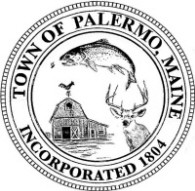 The Planning Board will be holding a Public Hearing on March 15th at 6:30 p.m.
The Planning Board will be holding a Public Hearing on March 15th at 6:30 p.m.
The Public hearing is for the Murphy Subdivision Revision of Nelson Lane/Marden Hill Road.
Due to COVID restrictions we are limited to how many people can be in the office.
ZOOM meeting info will be posted on the town’s website: www.townofpalermo.org
For more information, contact:
Mary Andrews
Town Clerk, Treasurer, & Registrar of Voters
Town of Palermo
45 N. Palermo Rd
Palermo, Maine 04354
207-993-2296/ fax 207-993-2938
Email: topclerk@fairpoint.net
OPINION: Will Palermo choose the path of sustainability?
/0 Comments/in Community Commentary, Opinion, Palermo/by Website Editor
David Attenborough in the documentary, “Life on Our Planet”
A Maine resolution to take action on climate pollution
by Pamela McKenney
If you need an introduction to climate change or an update on the state of our planet, David Attenborough’s recent documentary, A Life on Our Planet, is a good place to start. After 93 years of work as a British broadcaster, writer, and naturalist visiting every continent on the globe and exploring its wildest places, Attenborough has seen the results of global warming first hand. He contends, “Real success [at reversing the impact of pollution] can only come if there is a change in our societies, and in our economics, and in our politics.”
Palermo town residents will have an opportunity to join others on the path of sustainability and carbon reduction in March at town meeting. An article has been introduced by Maine citizens at dozens of Maine municipalities intending to show support for federal legislation that will reduce carbon pollution – a major cause of climate change. The Maine Resolution to Take Action on Climate Pollution “calls upon our State and Federal elected representatives to enact legislation that will protect Maine from the costs and environmental risks of continued climate inaction.” This article is not a proposed bill; it is communication tool to instigate action. It communicates that the residents of Palermo favor a fee and dividend approach that charges fossil fuel producers for their carbon pollution and rebates the money collected to all residents on an equal basis. Enacting a Carbon Cash-Back program decreases long-term fossil-fuel dependence, aids in the economic transition to renewable energy, and keeps local energy dollars in Maine’s economy. Carbon Cash-back has been championed by US economists (Jan. 17, 2019, Wall Street Journal) as the most effective and fair way to deliver rapid reductions in harmful carbon emissions at the scale required for our safety and to support our environment.
Carbon Cash-back is a proposed climate solution that would place a fee on fossil fuel production and imports at their source (mine, refinery, pipeline, or port of entry). Money collected from this fee would be returned to every citizen equally as a dividend, to put a price on carbon pollution from fossil fuels and return funds from collected fees to all US households monthly, off-setting the potential increase in pricing. As stated in the article, voting for it will spark “our representatives to lead in this critical moment for the health and well-being of our citizens and for the protection of Maine’s natural resources upon which we all rely.” More information is provided on the Town of Palermo website and at the town office.
There are many attitudes people can adopt on the issue of climate change. We might think:
- Earth belongs to humanity – the superior species – and its resources are at our disposal.
- Global warming is part of a natural cycle, not caused or impacted by humans.
- Global warming may be caused mostly by humans, but there is nothing we can do about it.
- Global warming is real and rapid, and we can take action now in order to reverse the damage.
To what degree do people understand that global warming is happening, human-caused, and a serious risk for human societies and natural ecosystems? According to a study fielded in December 2020 by the Yale Program on Climate Change, Americans who think global warming is happening outnumber those who think it is not by a ratio of more than five to one. More than half of Americans (58 percent) understand that evidence indicates global warming is mostly human-caused, although three in ten think global warming is due mostly to natural changes in the environment. The study also states that one in four Americans are “very worried,” however 41 percent feel helpless about creating change. But experts say we can make a difference, if we act now.
David Attenborough’s A Life on Our Planet details humanity’s impact on the natural world and the devastating changes he has witnessed. Alarming as this film is in its scope and documentation, his reckoning concludes with a message of hope. “Although we are often blinkered by the needs of here and now, we have a path to sustainability. If enough people can see the path, we may start down it in time.”
Sheepscot Lake association launches new website
/0 Comments/in Palermo, Sheepscot Pond/by Website Editor The Sheepscot Lake Association (SLA) has recently launched a new website to update members and the community of the SLA’s programs and activities, as well as general information about the lake and the association. Please check it out, bookmark it and pass it along to neighbors, family and friends who may be interested: www.sheepscotlakeassociation.com
The Sheepscot Lake Association (SLA) has recently launched a new website to update members and the community of the SLA’s programs and activities, as well as general information about the lake and the association. Please check it out, bookmark it and pass it along to neighbors, family and friends who may be interested: www.sheepscotlakeassociation.com
You may also join the association, pay your annual dues via paypal, or contact them with questions or concerns on their website.
Northern Light begins Covid-19 community vaccinations
/0 Comments/in Central ME, China, News, Palermo, Vassalboro/by Website Editor
Connie and Ray Winship, a retired Waterville couple, were among the first to be vaccinated at the January 26 clinic. photo courtesy of Northern Light Inland Hospital
Northern Light Inland Hospital kicked off its first community vaccination clinic on January 26 for community healthcare workers and people age 70 and older in collaboration with Kennebec Valley Community College (KVCC) in Fairfield. 92 doses were administered on the first day at the KVCC vaccination site. Ongoing clinics will be added as the hospital learns of its vaccine allotment from the state each week.
“We are very excited to be moving into this phase of community vaccinations,” said Terri Vieira, hospital president. “We have started dose two of the vaccine with our own staff, and we’re pleased to be moving onward to vaccinate more people in the communities we serve. It’s progress, it’s hope. At the same time, we have to be patient as the vaccine supply is still significantly lower than we had hoped.”
To be able to make these mass vaccination clinics a reality, Inland Hospital needed a community partner to provide a large space, and KVCC stepped up to the plate in a big way.
“We are very grateful that KVCC is giving Inland, and our community, the support that is needed for these clinics,” noted Vieira. “They have long been our partner in healthcare, training many of our staff who work at the hospital and our medical practices.”
The college has opened its Carter Hall Multi-Purpose Center for the location of the community clinics.
“KVCC is so pleased to become part of the solution to the pandemic in our region,” stated Richard Hopper, KVCC president. “Besides providing the space, we are looking at how our students and faculty can play a role in helping at future vaccination clinics for second-round doses and the expansion of Northern Light’s program. Northern Light has been and continues to be a trusted partner of KVCC.”
Connie and Ray Winship, a retired Waterville couple, were among the first to be vaccinated at the January 26 clinic. Connie said, “We’re getting vaccinated because we want to be able to visit our kids and grandkids this summer – it’s been more than a year since we were together.” Ray commented, “Getting the vaccine gives us hope and makes us feel good that we are doing our part to get things back to normal.”
Vaccine Registration
Individuals must pre-register to take part in a vaccination clinic. Due to the high demand as well as the logistics around handling the vaccines, walk-ins cannot be accommodated. Community members should not show up at the KVCC site without an appointment. Each week, after receiving their vaccine allotment from the Maine CDC, Inland will open new clinics at KVCC based on that availability. The hope is to hold at least one clinic each week, but vaccine availability will determine how they can proceed.
Registration is available at covid.northernlighthealth.org/publicvaccine. For those who do not have internet access, call 207.204.8551 to reach the Vaccine Registration and Information line seven days a week from 9 am to 5 pm. Due to the strong community interest and very low vaccine supply, slots are few and filling up very quickly.
Preparing for Registration
When preparing to register, whether by phone or online, people are asked to have their insurance or Medicare information ready, and the name and phone number for an emergency contact person. The vaccine itself is free but a small charge to cover the cost of administration will be billed to people’s insurance.
At this time, community clinics will be for those 70 or over and community healthcare workers only per Maine CDC guidance.
For More Information
Community members are encouraged to visit covid.northernlighthealth.org/publicvaccine each Monday to learn about clinics that may be scheduled for the week. Or visit the Maine CDC website (www.Maine.gov) to see all vaccination sites across the state and any open appointments.
Inland Hospital leaders are asking individuals to please not call their primary care office or the hospital to try to register. The two options for registering at this time are on the website or the special registration phone line.
Submitted by Sara Barry, Director, Regional Marketing and Communications
Interesting links
Here are some interesting links for you! Enjoy your stay :)Site Map
- Issue for April 3, 2025
- Issue for March 27, 2025
- Issue for March 20, 2025
- Issue for March 13, 2025
- Issue for March 6, 2025
- Issue for February 27, 2025
- Issue for February 20, 2025
- Issue for February 13, 2025
- Issue for February 6, 2025
- Issue for January 30, 2025
- Issue for January 23, 2025
- Issue for January 16, 2025
- Issue for January 9, 2025
- Issue for January 2, 2025
- Issue for December 19, 2024
- Issue for December 12, 2024
- Issue for December 5, 2024
- Issue for November 28, 2024
- Issue for November 21, 2024
- Issue for November 14, 2024
- Issue for November 7, 2024
- Issue for October 31, 2024
- Issue for October 24, 2024
- Issue for October 17, 2024
- Issue for October 10, 2024
- Issue for October 3, 2024
- Sections
- Our Town’s Services
- Classifieds
- About Us
- Original Columnists
- Community Commentary
- The Best View
- Eric’s Tech Talk
- The Frugal Mainer
- Garden Works
- Give Us Your Best Shot!
- Growing Your Business
- INside the OUTside
- I’m Just Curious
- Maine Memories
- Mary Grow’s community reporting
- Messing About in the Maine Woods
- The Money Minute
- Pages in Time
- Review Potpourri
- Scores & Outdoors
- Small Space Gardening
- Student Writers’ Program
- Solon & Beyond
- Tim’s Tunes
- Veterans Corner
- Donate



